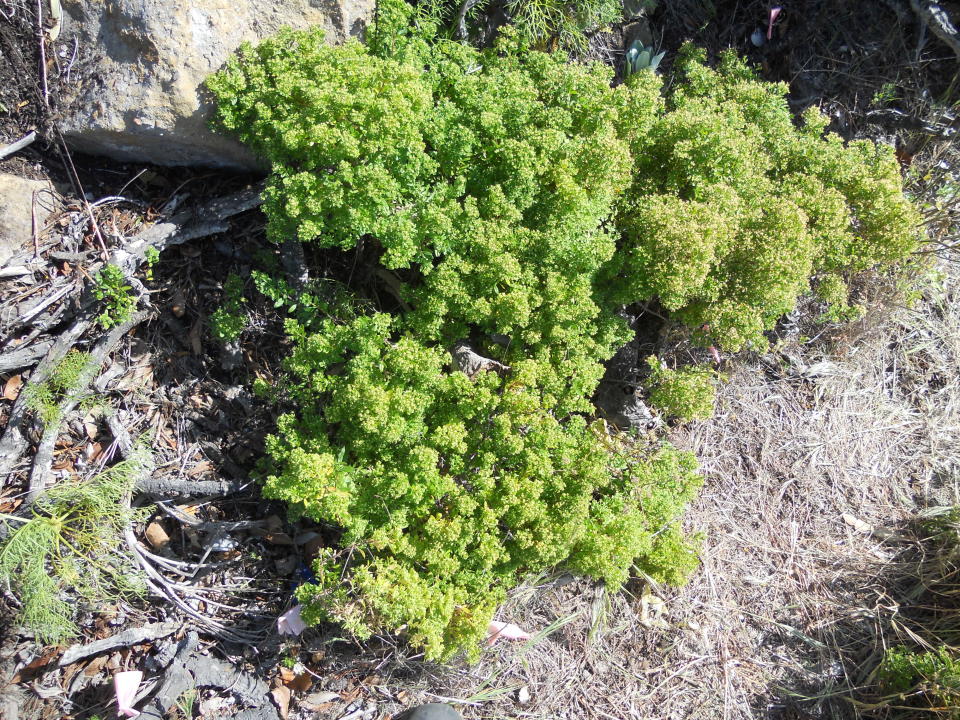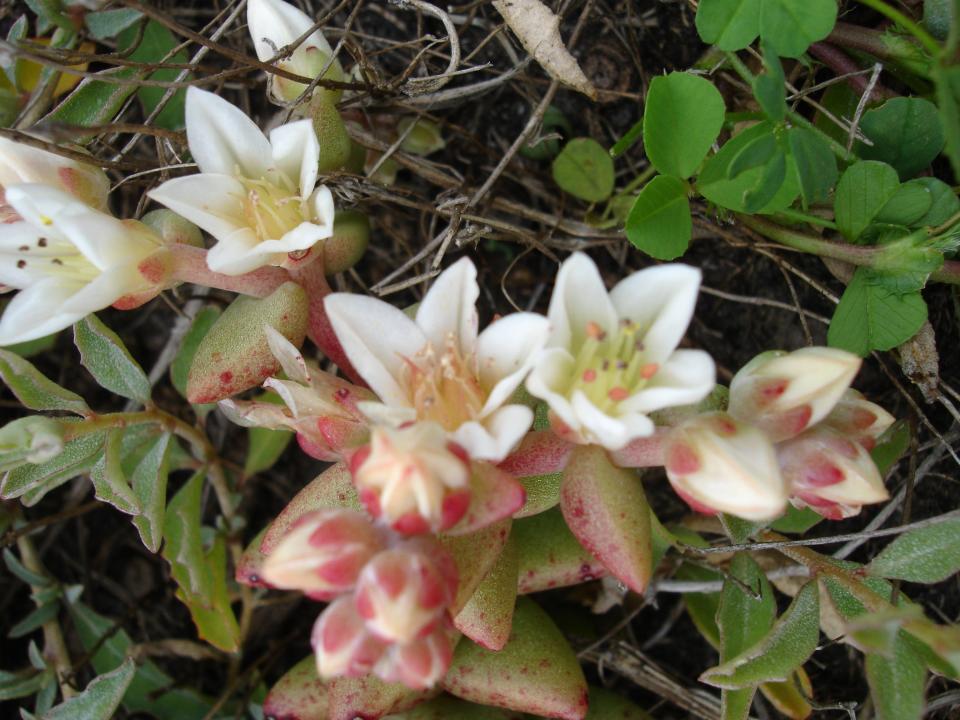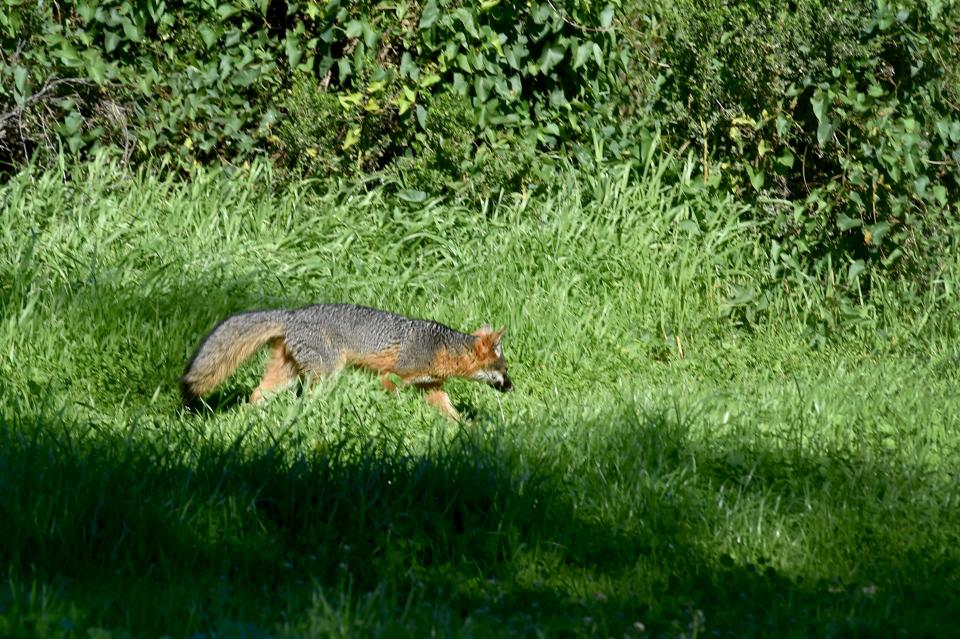2 endangered plants made a comeback on the Channel Islands. Here's how they beat the odds
Two plants found only on the northern Channel Islands off Ventura beat bleak odds, spreading farther than scientists expected as the land transitioned from decades of ranching to a national park without livestock.
Sheep and pigs once brought to the wind-swept, remote islands consumed and trampled vegetation, leaving areas vulnerable to erosion. Nonnative grasslands crept in, and native plants, some found nowhere else in the world, started to disappear.
In 1997, the U.S. Fish and Wildlife Service listed island bedstraw, Santa Cruz Island dudleya and 11 others as endangered and threatened. Agencies had already started a long process to remove the nonnative mammals and restore the native vegetation on the islands, part of the Channel Islands National Park.
The Fish and Wildlife Service recently announced island bedstraw and Santa Cruz Island dudleya had recovered, recommending they be removed from the endangered species list.
As the populations got bigger and better distributed, they became more likely to overcome threats, said Cat Darst, an assistant field supervisor with the Fish and Wildlife Service in Ventura.

Darst credited efforts by the National Park Service, The Nature Conservancy, which owns part of Santa Cruz Island, along with scientists at the U.S. Geological Survey and the Santa Barbara Botanic Garden for the comeback.
"This success is because of the partners and the fact that they have done all this monitoring and major habitat restoration work," Darst said. "It shows that the Endangered Species Act can work."
Scientists called the endangered island bedstraw — a shrub with pointed leaves the size of a pinky fingernail and even tinier cream-colored flowers — a success story. Found only on Santa Cruz and San Miguel islands, the population had dropped to 1,000 or so plants in the 1990s.

Some called it sea cliff bedstraw, because that was the only place they thought it grew. But as the species bounced back, it spread farther, showing up more than a half-mile inland in some spots, said Ken Niessen, a botanist with the wildlife agency.
The population of Santa Cruz Island dudleya hadn't crashed like some of the other plant species. But the pigs had threatened the rare succulent's survival. Without pigs on the island, the dudleya population remains stable and has spread to new areas, Niessen said.
Working with threatened species on the remote islands came with challenges. The location required scientists to travel miles offshore, at times navigate sheer cliff faces and rocky terraces and work with their heads bent down in gusty winds and blowing fog, Niessen said.
But conservation efforts in a national park also had benefits. The land was protected against urbanization and its isolated location helped keep nonnative animals and plants from returning. On the mainland, that is far less likely, Darst said.

'Like a big Jenga tower'
Several years ago, the Channel Islands were home to another endangered species success story. A small, cinnamon-colored fox on three of the northern Channel Islands made one of the fastest recoveries in the history of the federal Endangered Species Act.
In the 1990s, golden eagles attracted to the islands by prey, including feral pigs on Santa Cruz, had decimated the island fox populations. Their numbers declined by more than 90%, and in 2004, the fox populations were listed as endangered.
By then, efforts were already underway, from setting up captive breeding centers to relocating golden eagles. A decade later, fox populations had bounced back, coming close to pre-crisis numbers.
Niessen described the two plants proposed for de-listing as key contributors to the island ecosystem.
"We have a whole system of ecosystems that are all kind of interlocked like a big Jenga tower," he said. "If you start pulling out individual blocks, you have no idea when that tower is going to collapse."
Keeping the parts together gives everything a better chance at survival, he said.
The Fish and Wildlife Service published the proposed rule and post-delisting monitoring plan on the Federal Register. Comments will be accepted under Docket No. FWS-R8-ES-2022-0066 until Jan. 30.
Cheri Carlson covers the environment for the Ventura County Star. Reach her at cheri.carlson@vcstar.com or 805-437-0260.
This article originally appeared on Ventura County Star: How 2 rare plants make a comeback on the Channel Islands, CA
